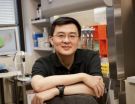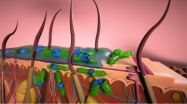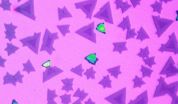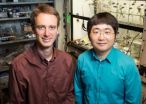(Press-News.org) In recent years, increasing pressure from policymakers, consumers, and suppliers has prompted manufacturers to set environmental targets that go beyond reducing the pollutants they emit from their smokestacks or discharge into rivers and lakes. Today companies must also assess environmental performance at every step in their process, from the mining of primary materials to the use and recycling of their products.
This perspective has given rise to the discipline known as life cycle engineering, which connects the engineers who grapple with the efficiencies of production processes, machine design, and process chains with the industrial ecologists who develop more over-arching methods of environmental assessment.
In a special issue of the Journal of Industrial Ecology (JIE), "Sustainability in Manufacturing: The Role of Life Cycle Engineering," experts from a range of disciplines — including industrial ecologists, manufacturing and design engineers, and production and operations researchers — explore the latest research on sustainable manufacturing and how life cycle engineering is being used to reduce environmental impact.
"At the heart of industrial ecology is an imperative to move beyond the make-now-clean-it-up-later approach that has characterized so much of our industrial society," said Reid Lifset, editor-in-chief of JIE. "Manufacturing is a point of leverage — better design and operations can have ramifications across the entire product life cycle. This is where industrial ecology meets life cycle engineering."
Some highlights from the issue include:
Mohannad Shuaib and colleagues from the University of Kentucky introduce a Product Sustainability Index that comprehensively assesses the sustainability of a product-based on four life cycle stages: pre-manufacturing, manufacturing, use, and post-use.
Tatiana Tambouratzis and colleagues from the University of Piraeus in Greece present a system based on artificial intelligence for the identification of sustainable materials.
Esther Sanye-Mengual from the Universitat Autónoma de Barcelona and colleagues argue that the maintenance of products — and strategies to influence that maintenance — should be included in product design and communications with users.
In a complementary article, Livier Serna-Mansoux and colleagues from SEATECH/SUPMECA in France assess the relationship between consumers and products and suggest strategies that could "nudge" consumers to use products in a way that exacts lower environmental costs.
Karsten Schischke from the Fraunhofer Institute for Reliability and Microintegration IZM and colleagues explore the potential energy savings and efficiency benefits through eco-design standards for industrial equipment, including welding equipment.
Quanyin Tan from Tsinghua University and colleagues quantify the benefits of remanufacturing older products in China.
"As this special issue of the Journal of Industrial Ecology shows, advances in life cycle engineering hold great promise for a more sustainable manufacturing sector," said Peter Crane, Dean of the Yale School of Forestry & Environmental Studies (F&ES). "From innovations in the manufacturing process itself, to designs that change the way consumers use products, the potential for improved environmental performance is profound."
INFORMATION:
The issue is available is freely available online for a limited time at http://onlinelibrary.wiley.com/doi/10.1111/jiec.2014.18.issue-4/issuetoc
The Journal of Industrial Ecology is a bimonthly peer-reviewed scientific journal, owned by Yale University, published by Wiley-Blackwell and headquartered at the Yale University School of Forestry & Environmental Studies.
Yale journal explores advances in sustainable manufacturing
2014-08-26
ELSE PRESS RELEASES FROM THIS DATE:
Composition of Earth's mantle revisited
2014-08-26
Research published recently in Science suggested that the makeup of the Earth's lower mantle, which makes up the largest part of the Earth by volume, is significantly different than previously thought.
Understanding the composition of the mantle is essential to seismology, the study of earthquakes and movement below the Earth's surface, and should shed light on unexplained seismic phenomena observed there.
Though humans haven't yet managed to drill further than seven and a half miles into the Earth, we've built a comprehensive picture of what's beneath our feet through ...
What can 14th century Venice teach us about Ebola and other emerging threats?
2014-08-26
The way in which the Italian city of Venice dealt with the outbreak of the plague in the fourteenth century holds lessons on how to even mitigate the consequences of today's emerging threats, like climate change, terrorism, and highly infectious or drug-resistant diseases. So says Dr. Igor Linkov of the US Army Engineer Research and Development Center, and a visiting professor of the Ca Foscari University in Italy. Linkov led an article on resilience management appearing in Springer's journal Environment Systems and Decisions.
Venice was the hub of many trade routes into ...
Sorting cells with sound waves
2014-08-26
CAMBRIDGE, MA -- Researchers from MIT, Pennsylvania State University, and Carnegie Mellon University have devised a new way to separate cells by exposing them to sound waves as they flow through a tiny channel. Their device, about the size of a dime, could be used to detect the extremely rare tumor cells that circulate in cancer patients' blood, helping doctors predict whether a tumor is going to spread.
Separating cells with sound offers a gentler alternative to existing cell-sorting technologies, which require tagging the cells with chemicals or exposing them to stronger ...
Introducing the multi-tasking nanoparticle
2014-08-26
(SACRAMENTO, Calif.) — Kit Lam and colleagues from UC Davis and other institutions have created dynamic nanoparticles (NPs) that could provide an arsenal of applications to diagnose and treat cancer. Built on an easy-to-make polymer, these particles can be used as contrast agents to light up tumors for MRI and PET scans or deliver chemo and other therapies to destroy tumors. In addition, the particles are biocompatible and have shown no toxicity. The study was published online today in Nature Communications.
"These are amazingly useful particles," noted co-first author ...
HIV antibodies block infection by reservoir-derived virus in laboratory study
2014-08-26
WHAT:
A laboratory study led by scientists from the National Institute of Allergy and Infectious Diseases, part of the National Institutes of Health (NIH), lends further weight to the potential effectiveness of passive immunotherapy to suppress HIV in the absence of drug treatment. Passive immunotherapy for HIV is an experimental strategy that involves periodically administering broadly neutralizing HIV-specific antibodies (bNAbs) to control the virus. It would be advantageous to control HIV without antiretroviral drugs because of their cost, the potential for cumulative ...
Breakthrough antibacterial approach could resolve serious skin infections
2014-08-26
Like a protective tent over a colony of harmful bacteria, biofilms make the treatment of skin infections especially difficult. Microorganisms protected in a biofilm pose a significant health risk due to their antibiotic resistance and recalcitrance to treatment, and biofilm-protected bacteria account for some 80 percent of total bacterial infections in humans and are 50 to 1,000 times more resistant to antibiotics than simpler bacterial infections.
"In essence, we may have stumbled onto a magic bullet," said David Fox, a Los Alamos National Laboratory researcher on the ...
Scientists craft atomically seamless, thinnest-possible semiconductor junctions
2014-08-26
Scientists have developed what they believe is the thinnest-possible semiconductor, a new class of nanoscale materials made in sheets only three atoms thick.
The University of Washington researchers have demonstrated that two of these single-layer semiconductor materials can be connected in an atomically seamless fashion known as a heterojunction. This result could be the basis for next-generation flexible and transparent computing, better light-emitting diodes, or LEDs, and solar technologies.
"Heterojunctions are fundamental elements of electronic and photonic devices," ...
Personal protective equipment is critical but not enough to shield health care workers from Ebola
2014-08-26
Personal protective equipment is critical but not enough to shield health care workers from Ebola*
Free content
Personal protective equipment designed to shield health care workers from contaminated body fluids of Ebola patients is not enough to prevent transmission, according to a commentary being published early online today in Annals of Internal Medicine. Despite the known effectiveness of barrier protection in blocking Ebola transmission, infections among health care workers have played a major role in outbreaks. William A. Fischer II, MD from the University of North ...
Challenges ahead in improving child health by increasing access to sanitation in India
2014-08-26
A study published in this week's PLOS Medicine on large-scale rural sanitation programs in India highlights challenges in achieving sufficient access to latrines and reduction in open defecation to yield significant health benefits for young children.
The researchers, led by Sumeet Patil from the School of Public Health, University of California at Berkeley, and the Network for Engineering and Economics Research and Management in Mumbai, India conducted a cluster randomised controlled trial in 80 rural villages in the Indian state of Madhya Pradesh to measure the effect ...
A glucose meter of a different color provides continuous monitoring
2014-08-26
CHAMPAIGN, Ill. — University of Illinois engineers are bringing a touch of color to glucose monitoring.
The researchers developed a new continuous glucose monitoring material that changes color as glucose levels fluctuate, and the wavelength shift is so precise that doctors and patients may be able to use it for automatic insulin dosing - something not possible using current point measurements like test strips.
"There are significant limitations to current continuous glucose monitoring technologies," said study leader Paul Braun, a professor of materials science and ...



